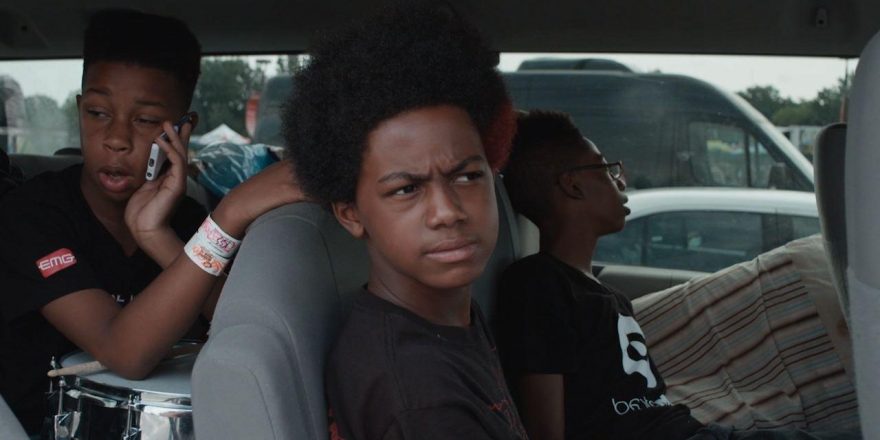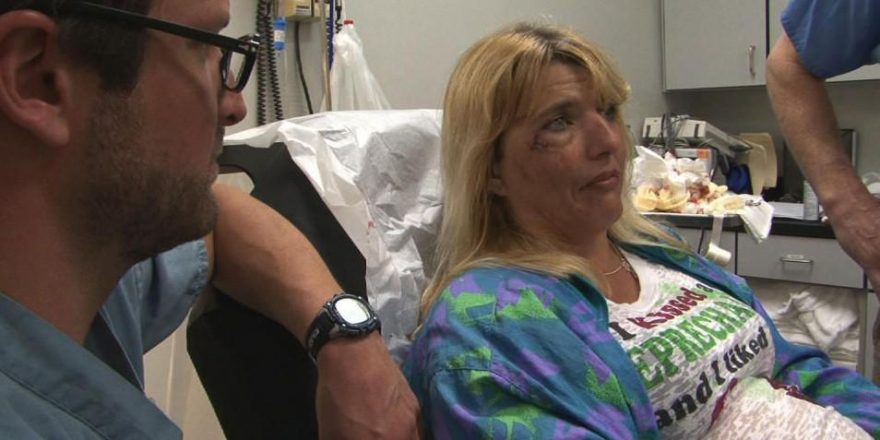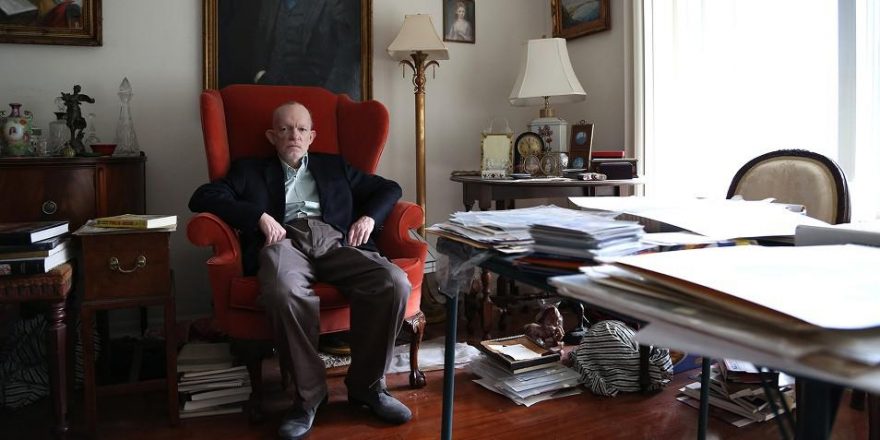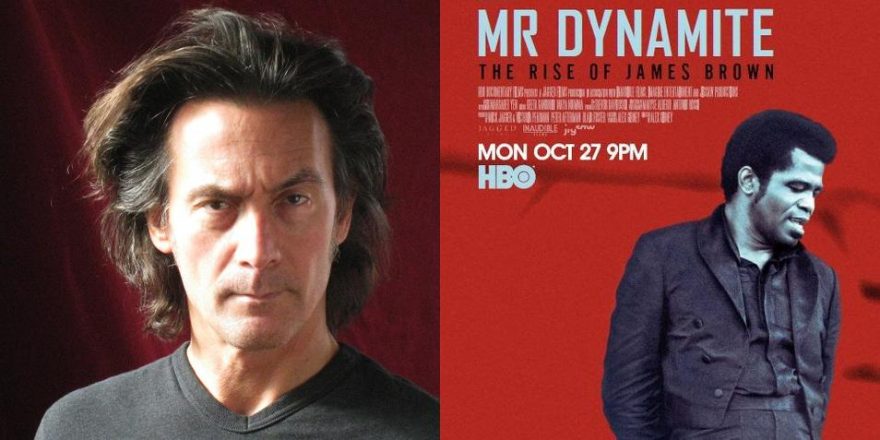There is a quality of “found-ness” in certain YouTube videos that is testament to their authenticity or reality. In these incidental videos, the more it feels like it was recorded by total chance, the more we feel like we are seeing something “real,” something that is beyond reproach simply because exists for its own sake and not for some projected purpose. My most recent documentary, Breaking a Monster, can be traced back to a YouTube video. As I was making it, always in my mind was the slight worry that my film wouldn’t feel as real as the video which, in a roundabout way, it had come from.
Breaking A Monster is about three African-American pre-teen kids in an up-and-coming heavy metal band, Unlocking the Truth, and their initiation into the music industry. Before the film, the band was most widely known because of a clip on YouTube. Simple and straightforward, it showed the boys, 11 and 12 at the time, playing heavy metal on a sidewalk in Manhattan. That video was watched (and shared and loved) more than a million times.
Watching the YouTube video, there is a clear feeling of discovery – of seeing something authentic that is playing out on its own, and the only reason you get to experience it is simply because someone happened to record it. We see three young and talented kids making music with a skill well beyond their years. There’s an incongruity to it – do they realize how special and unusual they are? Many YouTube videos are like this: little windows in our computer screens that transport us down a road flanked by innocent entertainment and gawking voyeurism. Would a video of the same kids, with the same talent, doing the same performance have been as appealing if it was clearly a promotional video? We can’t know for sure, but it’s doubtful. We, the audience, like to feel as if we’re discovering something in what we are watching. Information is always more powerful when we feel proprietarily involved in it.
When you’re making a documentary about a band that’s trying to find success, the conditions are ripe for self-promotion. As I made Breaking a Monster, I struggled to keep a vigilant and careful eye on the degree to which everyone I was filming was drifting into performative or presentational behavior. When were the people in the film – the kids in the band, their parents, the professionals around them – being authentically themselves?
In some ways these are the questions buried deep down inside what it means to be alive in the media-saturated 21st century. From security cameras to selfies and everything in between, we are no longer surprised when we find a camera pointed at us. If a recording captures who we are, are we more authentically ourselves when we know we are or are not being recorded?
Are we more authentically ourselves when we know we are or are not being recorded?
When recently I watched Roberto Minervini’s The Other Side, I felt my sensory relationship with the film’s reality (or at least authenticity) being deeply and electrically challenged. It feels clear that much of what we’re watching is excerpted samples of the unadulterated lives and experiences of the people on screen. “People aren’t playing themselves, they are themselves,” Minervini told Filmmaker magazine. “The Other Side is a testament to their lives.”
For more than half of its duration, the film focuses on Mark, a meth junkie who, even though he’s a full-blown addict, is able to transmit a clarity of self and be multi-dimensionally sympathetic in ways that transcend his high-chasing lifestyle. He makes and deals drugs, picks up work at a scrap yard, cares for his aging grandmother and dying mother, celebrates the New Year in a river baptism with his lover, Lisa. Mark’s is a heavy and dark world, perhaps best personified when a soon-to-be mother shoots up and heads out to the stage to perform a strip tease, undaunted by the gracelessness caused by her high and her pregnant belly. Mark and every other person we meet here is deeply embattled within and without. The authenticity of a world this fraught is difficult to deny.
However, there are moments when the extreme conditions in The Other Side cannot fully sweep away the sensation that we are watching someone in the midst of a performance for the other people present with them, and very likely that for the camera as well. Mark and his nephew break into a school and Mark starts teaching his own economics lesson with the educational wall displays. In the other section of the film, which is focused on a Louisiana militia group, we watch a vet with a badass reputation bring himself to tears talking about the underlying ideas of Independence Day. Who are those tears for? Are they for himself, the people he is talking to, the camera pointed at him? The delicate cinematography by Diego Romero and the intimate and cooperative access to normally private, if not secretive, moments – such as sex and hardcore drug use – trigger a cinematic-sensory alarm; this is something unusual, something beyond standard observational filmmaking.
The Other Side and Minervini’s other work have been described as “hybrid” films, drawing elements from both fiction and nonfiction filmmaking. This term feels too tidy for me here, the middle space this film exists in is churning, uncertain, brackish. This film seems to be so overloaded with elements of fiction and nonfiction – as if it’s too much of a documentary to be simply nonfiction, and too manipulated to be fiction – that it becomes neither because it is both.
This is what I find so fascinating about The Other Side. Through the film’s sheer intensity, it magnetically draws our attention to the points where there are likely the most fictitious techniques in the filmmaking, which are simultaneously some of the most real-feeling moments that we witness. Mark and Lisa having sex. The militia rationalizing their purpose. Mark’s proposal to Lisa: “I love you, bitch.” The militia blowing up a car as a celebration. The mirrored opening and closing of Mark’s section in the film – him waking up naked by the side of the road, and in the woods, peeling off his clothes in anguish. We know, in as much as we can sense, that these moments didn’t just happen with the good fortune of a camera ready to record them, but on a sensory level we choose to ignore it. To me, this highlights so much about how cinema works: We are ready and willing, wanting even, to accept what we know to be fake as long as it gives us a feeling of something real.

As the lines between nonfiction and fiction films continually blur and cross, and as the two categories keep borrowing techniques from each other – one trying to feel more “real,” the other trying to feel more “like a movie” – maybe there is something pointing toward another distinction between the two categories of filmmaking: nonfiction films ask the audience to consider the relationship of the people on screen to the camera that is recording them, and fiction films ask us to believe the camera does not exist.






